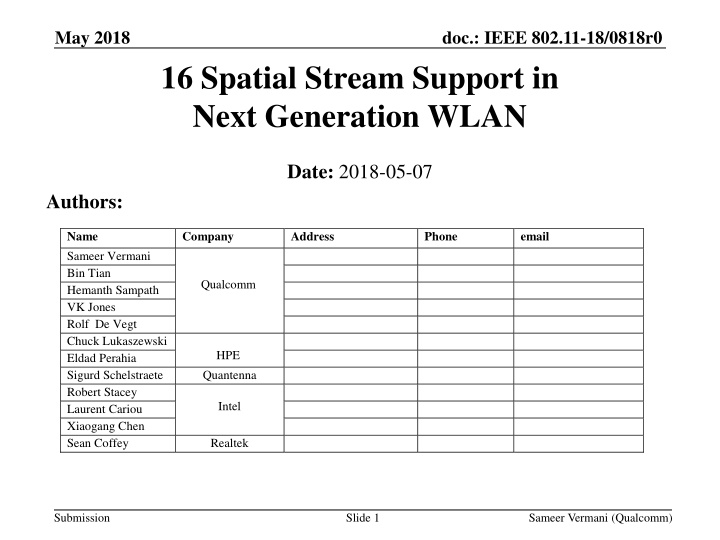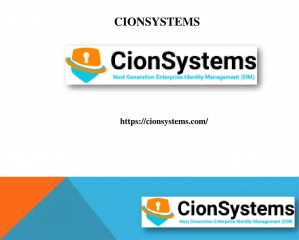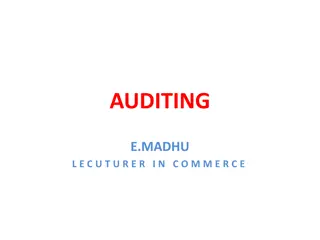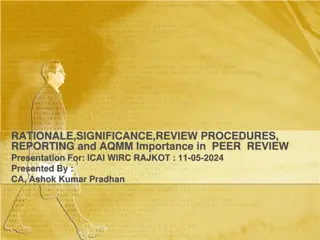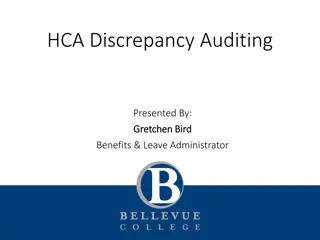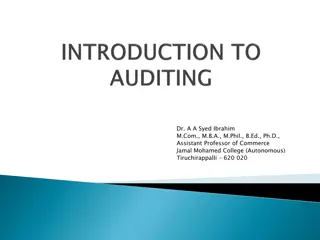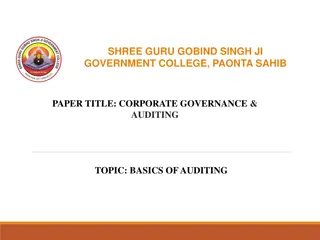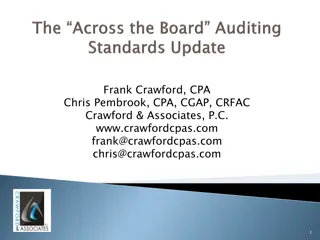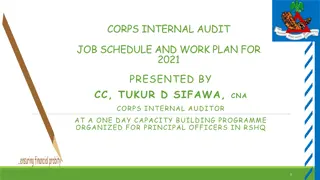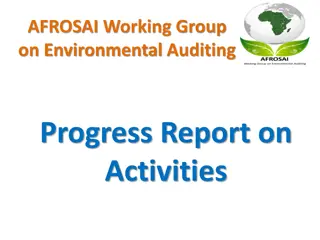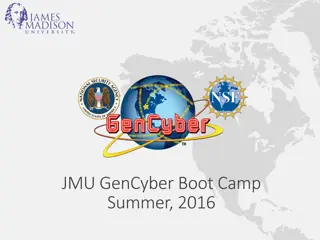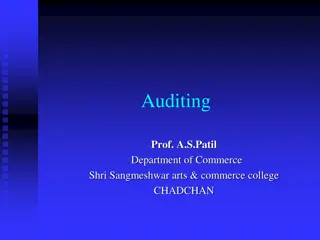MS Dynamics: Financial Auditing with D365F
Microsoft Dynamics (MS Dynamics or D365F) is a leading ERP solution offering robust auditing capabilities to streamline the audit process for Chartered Accountants. Explore how D365F empowers CAs to conduct efficient and effective audits in today's complex financial environment marked by globalization, evolving regulations, and growing data volumes. Discover key concepts like General Ledger, Expense Management, and Fixed Asset Management in D365F that enhance audit control and streamline financial processes.
Download Presentation

Please find below an Image/Link to download the presentation.
The content on the website is provided AS IS for your information and personal use only. It may not be sold, licensed, or shared on other websites without obtaining consent from the author.If you encounter any issues during the download, it is possible that the publisher has removed the file from their server.
You are allowed to download the files provided on this website for personal or commercial use, subject to the condition that they are used lawfully. All files are the property of their respective owners.
The content on the website is provided AS IS for your information and personal use only. It may not be sold, licensed, or shared on other websites without obtaining consent from the author.
E N D
Presentation Transcript
doc.: IEEE 802.11-18/0818r0 May 2018 16 Spatial Stream Support in Next Generation WLAN Date: 2018-05-07 Authors: Name Sameer Vermani Bin Tian Hemanth Sampath VK Jones Rolf De Vegt Chuck Lukaszewski Eldad Perahia Sigurd Schelstraete Robert Stacey Laurent Cariou Xiaogang Chen Sean Coffey Company Address Phone email Qualcomm HPE Quantenna Intel Realtek Submission Slide 1 Sameer Vermani (Qualcomm)
doc.: IEEE 802.11-18/0818r0 May 2018 What s Next Trends Proliferation of high throughput demanding applications AR/VR, HD-gaming, 4k video, cloud computing, etc Availability of high speed backhaul: Fiber-to-home Adoption of 8 antenna Access Points History 11n: High Throughput (HT), 11ac: Very High Throughput (VHT), 11ax : High Efficiency (HE) Mission of next generation: Increased throughput Submission Slide 2 Sameer Vermani (Qualcomm)
doc.: IEEE 802.11-18/0818r0 May 2018 16 Spatial Streams Spatial multiplexing gain has been a key technology driver for 802.11 in the last few standards cycles Started with SU-MIMO in 802.11n Provides multiplicative gains within the same bandwidth by improving spectral efficiency 802.11ac and 802.11ax extended the benefits further by adding MU-MIMO DL MU-MIMO in 11ac and DL/UL MU-MIMO in 11ax Provides substantial spatial multiplexing gains even with STAs having a limited number of antennas Max number of spatial streams is 8 APs with 8 antennas are getting adopted in market Continuing the trend of better spectral efficiency, recommend increasing the maximum number of spatial streams to 16 We show that significant throughput benefits are on offer by doing so Submission Slide 3 Sameer Vermani (Qualcomm)
doc.: IEEE 802.11-18/0818r0 May 2018 Fundamental Advantage of Predominantly Indoor WiFi Operation Good condition number of channels seen by 802.11 Lower spatial correlation at Tx and Rx Higher angular spreads Rich Scattering The result is a wireless channel capable of supporting a lot of spatial streams Submission Slide 4 Sameer Vermani (Qualcomm)
doc.: IEEE 802.11-18/0818r0 May 2018 MU-MIMO Performance Using Measured Channels We analyzed MU-MIMO performance with 16x16 measured channels at 5GHz To validate the performance gains from >8 spatial streams Measurements in a conference room setting 8 clients with 2 antennas each /2 spaced dipoles Arranged around conference room table 16 AP antennas linear array, /2 spaced dipoles AP positioned in three LOS locations (same room as clients) and two NLOS locations (outside the conference room) Channel sounding system measures 20 MHz bandwidth channel Submission Slide 5 Sameer Vermani (Qualcomm)
doc.: IEEE 802.11-18/0818r0 May 2018 MU-MIMO Measurement Location Green circles show 8 client locations (2 antennas per client) Red squares show 5 tested AP locations Locations 1-3: LOS, AP in same room as clients Locations 4-5: NLOS We show performance results for location 1 All locations show similar trends Submission Slide 6 Sameer Vermani (Qualcomm)
doc.: IEEE 802.11-18/0818r0 May 2018 MU-MIMO Setup (AP in Location 3) Submission Slide 7 Sameer Vermani (Qualcomm)
doc.: IEEE 802.11-18/0818r0 May 2018 DL MU-MIMO Performance Setup Results for location 1 16Tx/8Tx AP to multiple 2 Rx STAs 10th percentile of sum PHY throughput at the AP for 450 channel realizations MMSE precoding Perfect rate adaptation Effective SINR mapped to a throughput Key observations By doing 16Tx MU-MIMO, we can get around 2x the throughput of 8Tx MU-MIMO Linear increase in throughput in going from 8 to 12 streams Submission Slide 8 Sameer Vermani (Qualcomm)
doc.: IEEE 802.11-18/0818r0 May 2018 UL MU-MIMO Performance Setup Results for location 1 Multiple 2Tx STAs transmitting to a 16Rx/8Rx AP 10th percentile of sum PHY throughput at the AP for 450 channel realizations MMSE receiver Perfect rate adaptation Effective SINR mapped to a throughput Key observations Using 16Rx UL MU-MIMO, we can get around 2x the throughput of 8Rx UL MU-MIMO Linear increase in throughput in going from 8 to 12 streams Submission Slide 9 Sameer Vermani (Qualcomm)
doc.: IEEE 802.11-18/0818r0 May 2018 Conclusions Higher number of spatial streams has been an inevitable trend in WiFi for more than a decade We recommend continuing along that path and supporting 16 streams in the next generation 802.11 standards Preliminary results show that significant performance gains are on offer Submission Slide 10 Sameer Vermani (Qualcomm)
